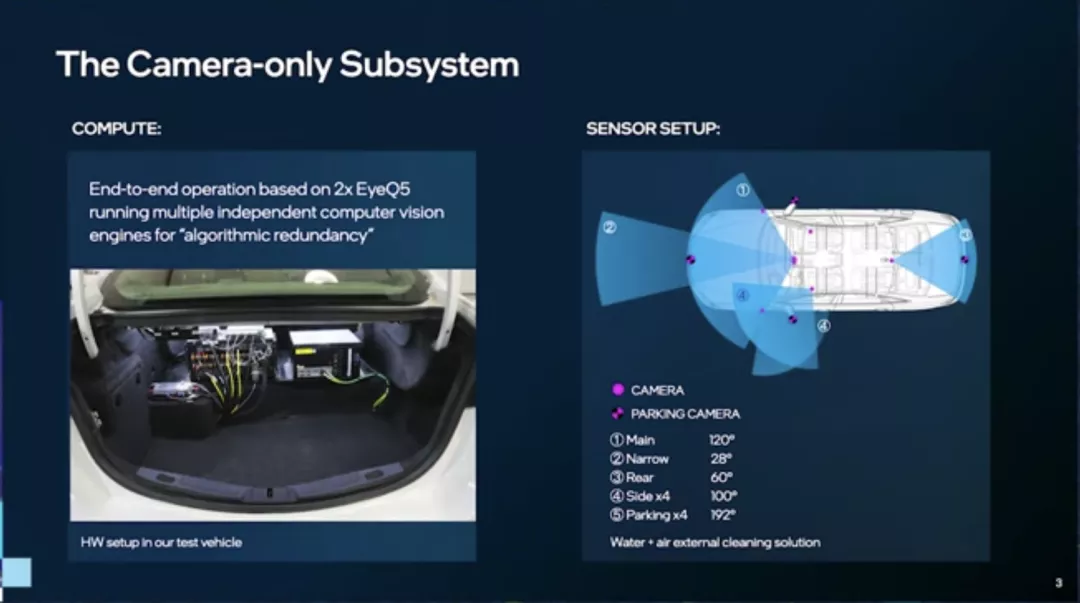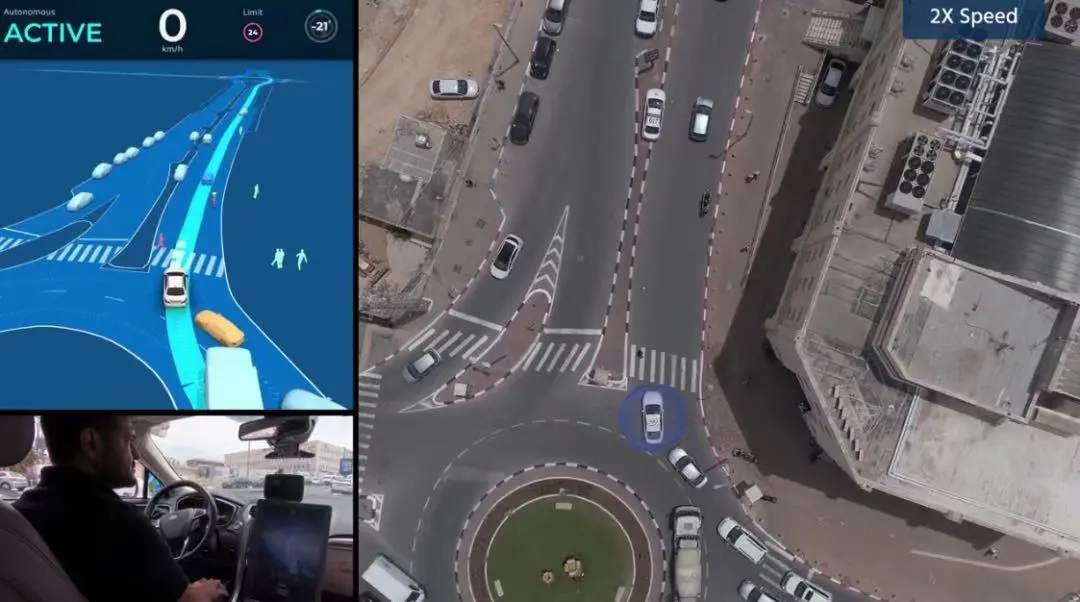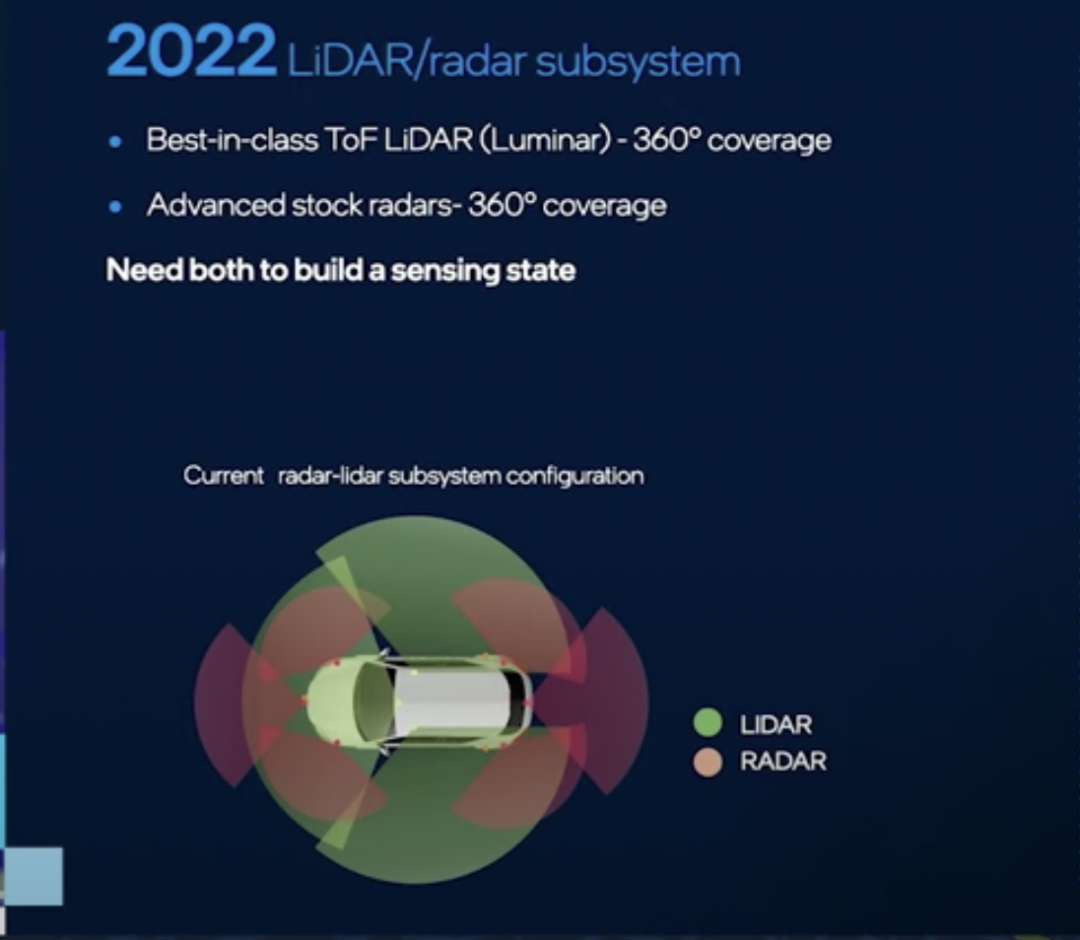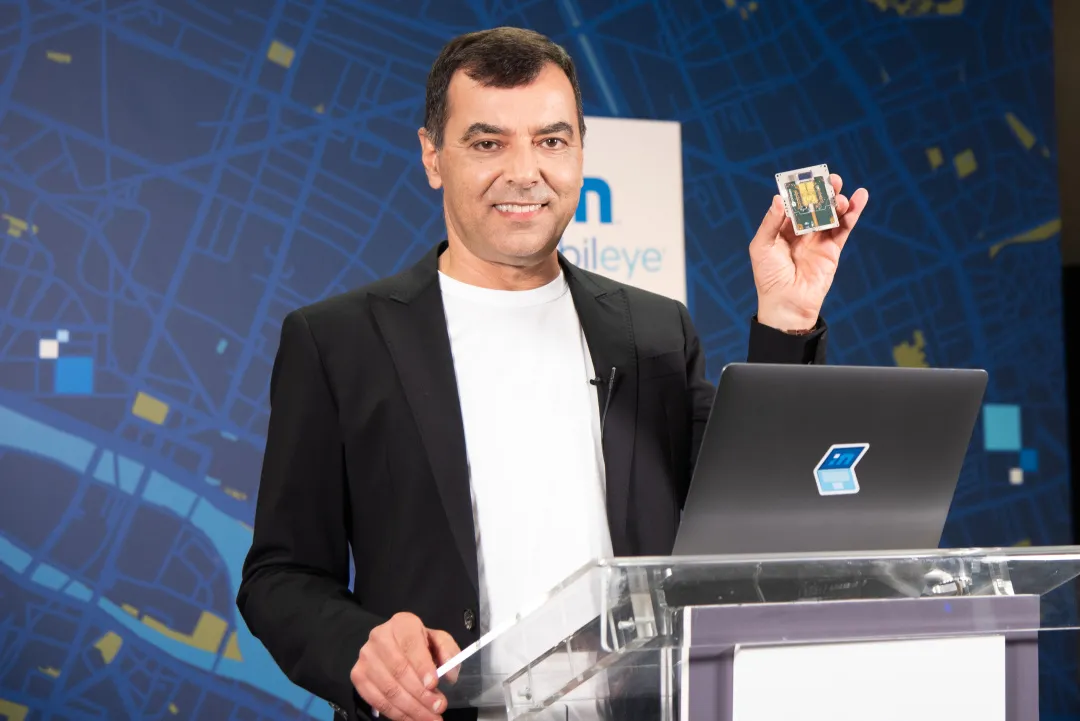Due to the global pandemic, all activities have been moved online, making this year’s CES (Consumer Electronics Show) very quiet. Online events didn’t quite match the experience of seeing things in person.
However, Mobileye didn’t disappoint. They released a video on YouTube featuring Professor Amnon Shashua, the CEO of Mobileye, who is also a senior vice president of Intel Corporation. The one-hour lecture was familiar and comforting, and worth waiting for.
Let’s take a look at Mobileye’s achievements in 2020:
Mobileye shipped 19.3 million chips, a 10% increase from 17.5 million in the same period last year, setting a new record. These results are even more impressive given the impact of the pandemic, which caused Mobileye to pause production for three months.
Mobileye has also streamlined its business, making it easier to understand their current business model:
From the PPT presentation, it can be seen that Mobileye’s business is mainly divided into two categories: assisted driving and autonomous driving.
In terms of assisted driving, there are two ways to generate revenue: the first is to sell the EyeQ chip with embedded software (which is currently Mobileyde’s main source of revenue); the second is to provide an autonomous driving domain controller, which is a new business. Based on this domain controller, Mobileye has even developed a surround-view advanced driver-assistance system (Mobileye SuperVision™) that uses two EyeQ®5H high-performance computing processors and 11 cameras. This is also the first time that Mobileye has taken on the role of an independent supplier of assisted driving system solutions.
The information available is that this system will first be deployed in Geely and Lynk&Co vehicles, with mass production scheduled for Q4 this year.# Mobileye: Layout in Automatic Driving and Emphasizing on Radar/LiDAR Subsystem
In the aspect of automatic driving, Mobileye has made layouts to become a travel service provider. This part is divided into three sections, firstly, providing automatic driving system (SDS), secondly, vehicle as a service (VaaS) business, and thirdly, mobility as a service (MaaS) business. The latter two services are based on the automatic driving car suite provided by Mobileye. Although it is still a long way for automatic driving to really land on operating, pre-layout is not a bad thing.
This time, Shashua focused on two aspects in his speech: maps and sensors.
The C-Position of the Lidar/Radar
In this speech, Lidar and radar are mentioned by Shashua the most. Furthermore, Mobileye even specifically uses a section to discuss Mobileye’s thoughts on radar and Lidar, which is rare indeed.
Mobileye developed two automatic driving subsystems: camera subsystem (pure visual subsystem) and radar/LiDAR subsystem.

This time, Mobileye will focus the speech on the radar/LiDAR subsystem.

In the radar/Lidar subsystem next year, Mobileye will mount the Limunar’s ToF Lidar (ToF stands for Time of Flight, which is a ranging solution for Lidar) to achieve 360-degree coverage (which means the single Lidar has a field of view of 120 degrees). In addition, the whole car will also be equipped with 6 radars to achieve another level of 360-degree perception coverage. Mobileye will rely on this system to achieve end-to-end automatic driving.
 Shashua said that by 2025, Mobileye wants to achieve two things: better autonomous driving capabilities and lower costs. Mobileye’s solution is to use cameras, radars, and lidars as independent systems, forming triple redundancy in the front of the car, while the rest is composed of double redundancy using radars and cameras.
Shashua said that by 2025, Mobileye wants to achieve two things: better autonomous driving capabilities and lower costs. Mobileye’s solution is to use cameras, radars, and lidars as independent systems, forming triple redundancy in the front of the car, while the rest is composed of double redundancy using radars and cameras.
It must be said that Shashua has really thought it through. If future autonomous driving systems are developed according to this concept, more information and details need to be obtained from sensors. Judging from Mobileye’s current progress, the pure visual solution is already very mature, and the pressure is on the radar and lidar side. Mobileye needs better lidars and radar sensors (imaging radars). So Mobileye is preparing to take matters into their own hands.
In the construction of imaging radars, Mobileye’s parent company, Intel, can play an important role. As we all know, Intel has a deep accumulation in the field of semiconductors. So how effective is it? See the left and right comparison in the picture below:
Shashua said that Mobileye’s software-defined imaging radar has 2304 channels, 100dB dynamic range, and 40dBc sidelobe level, which allows the radar to construct a sensing state capable of supporting autonomous driving strategies. With fully digital and advanced signal processing technology, multiple scanning modes, rich raw detection, and multi-frame tracking, Mobileye’s software-defined imaging radar represents a paradigm shift in the architecture of autonomous driving cars, achieving a significant performance leap.
The actual effect is shown below:
Compared with the common radar on the market, Mobileye’s imaging radar has more and richer details. It seems that having someone to rely on really makes a difference.In the field of LiDARs, while Mobileye currently uses ToF LiDAR, Shashua sees FMCW LiDAR as the next frontier of LiDARs because of its advantages in directly measuring velocity information and resisting interference.
Intel has played a significant role in this area, utilizing their XPU strategy and expertise in silicon photonics, along with manufacturing capabilities, to create a system-on-a-chip (SoC) for Mobileye’s autonomous vehicle LiDAR system, which will be put into use in 2025.
Thus, Mobileye, which once formed a united front with Tesla, has officially joined the camp of LiDARs. Tesla remains the only company persisting in their vision-only approach.
The Road Experience Management™ (REM™) high-precision map is the focus of this speech. As early as 2015, Mobileye proposed the idea of crowdsourced mapping. Mobileye’s REM technology uses crowdsourcing and low-bandwidth uploads to quickly and economically manage road network information, which can be applied to enhanced ADAS (such as L2+) and future higher-level autonomous driving cars. In recent years, Mobileye has enlisted many car manufacturers to join their REM camp, including Volkswagen, Nissan, BMW, and China’s SAIC.
Currently, Mobileye can automatically draw high-precision maps at a rate of nearly 8 million kilometers per day, and has completed nearly 1 billion kilometers of high-precision map drawing to date.
Mobileye also emphasized the characteristics of its map solution: attention to semantic details. These details are crucial for autonomous driving cars to understand and consider specific environmental conditions.
To demonstrate the expandable advantages brought by Mobileye’s automated high-precision map technology, Mobileye will begin testing autonomous driving cars in four new countries, with new test cars expected to hit the roads in Detroit, Tokyo, Shanghai, and Paris in early 2021. Furthermore, once regulatory approval is granted, the implementation will be expanded to New York.Through its own map support, Mobileye will directly deliver its self-driving cars to local customer support teams for testing without the need to send professional engineers to these new testing sites. After completing the necessary safety training, these self-driving cars can be put into operation. In 2020, Mobileye already adopted this method in Munich and Detroit, and it only took a few days for self-driving cars to hit the road.
This is the power of REM high-precision maps. I think I understand what Shashua meant when he said, “After 5 years of development, Mobileye has reached a game-changing status.” It’s like a snowball rolling downhill. As more and more automakers join REM in the future, Mobileye may become the world’s largest provider of high-precision maps.
In conclusion, this speech continues Shashua’s style of compact content and high information density. I recommend everyone to take a look. In this speech, Shashua used “game-changing” several times, and the released content proves it to be true. With the help of its parent company Intel, it brings game-changing LiDAR and radar, and after 5 years of deep cultivation, REM maps have finally entered into a qualitative change, helping Mobileye become the world’s largest provider of high-precision maps…
Mobileye is making moves, so how will other self-driving companies respond?
This article is a translation by ChatGPT of a Chinese report from 42HOW. If you have any questions about it, please email bd@42how.com.
